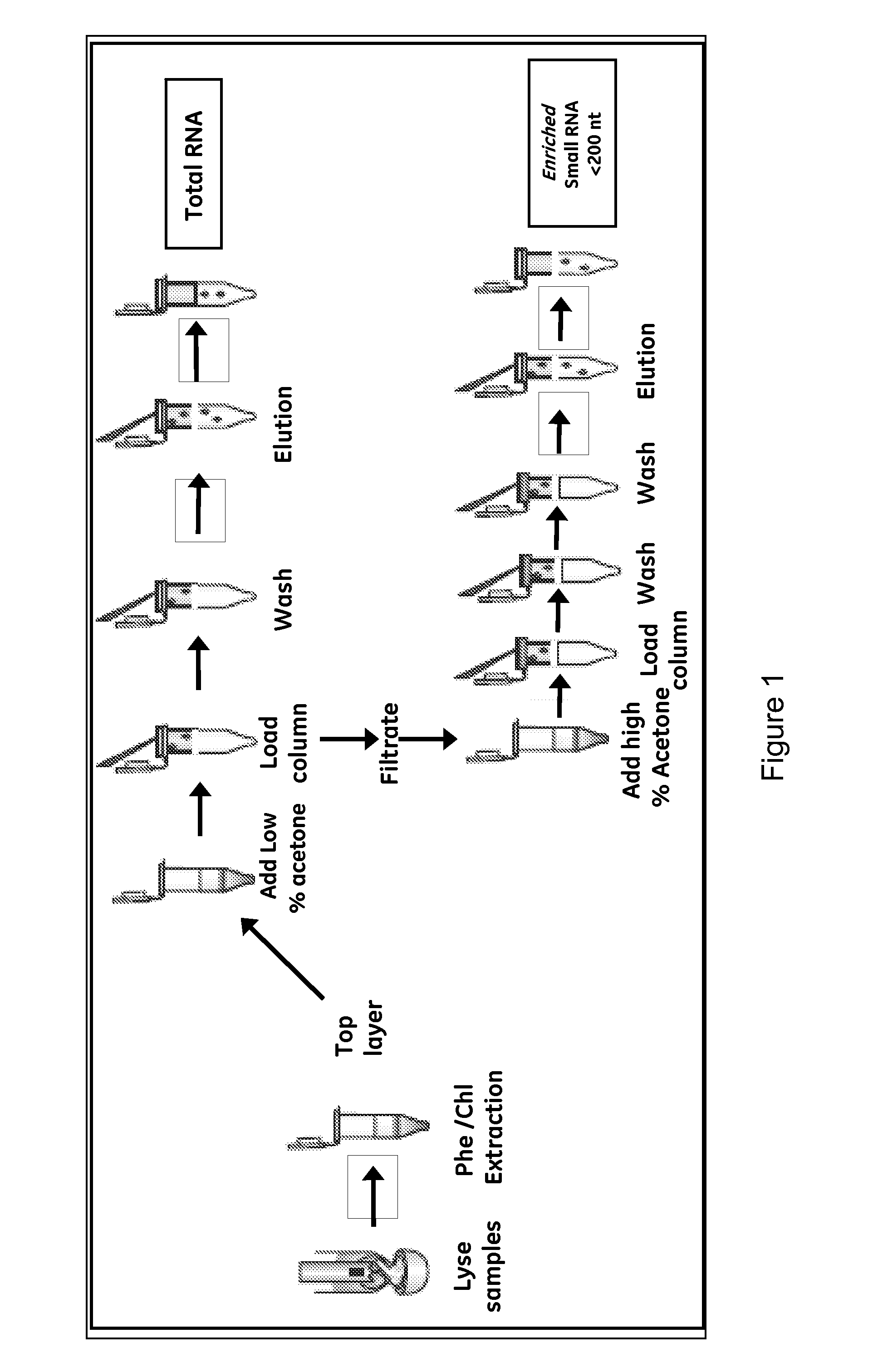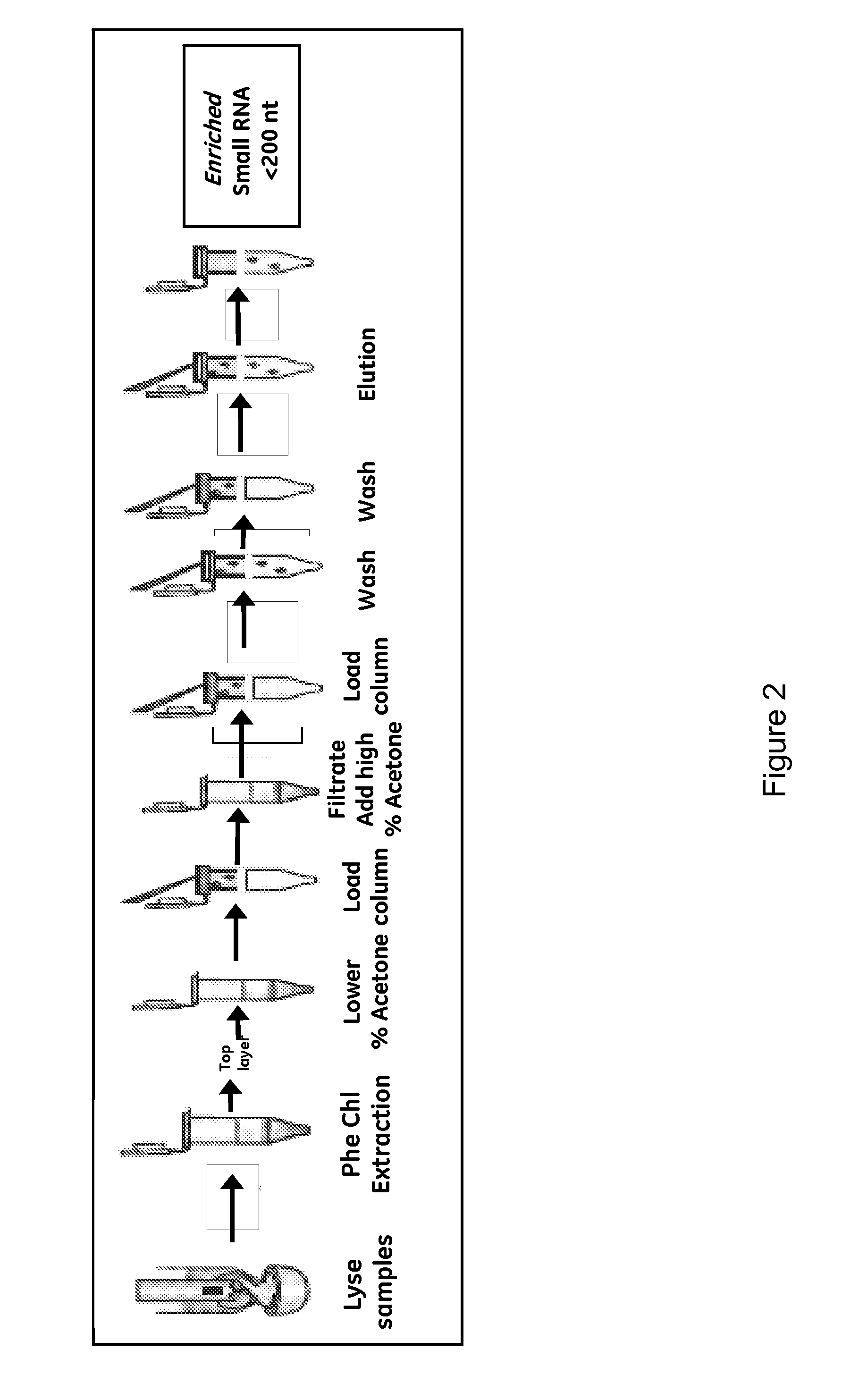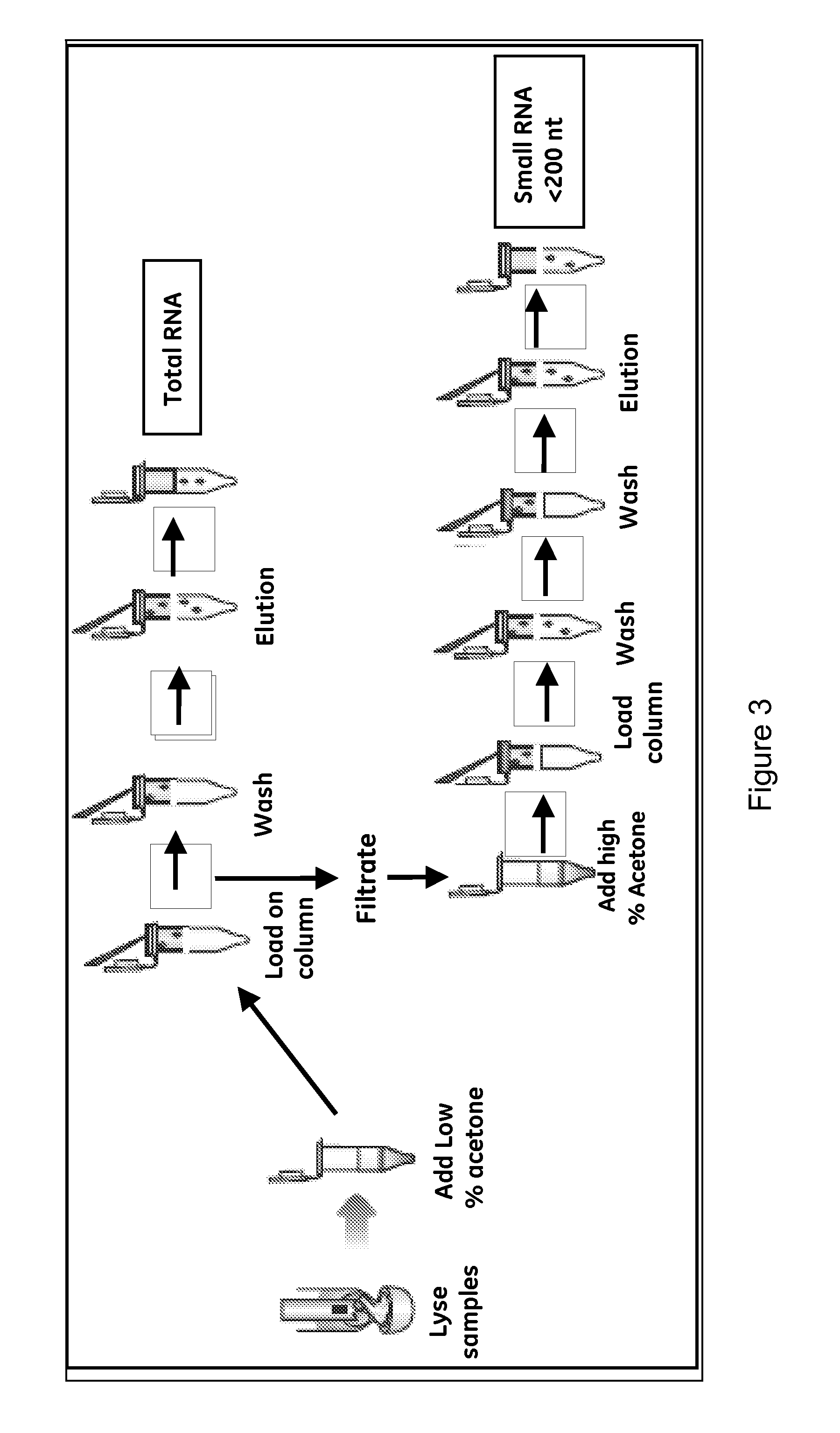Method for small RNA isolation
a technology of rna and small rna, which is applied in the field of nucleic acid isolation methods, can solve the problems of loss of much, and achieve the effect of simple and rapid
- Summary
- Abstract
- Description
- Claims
- Application Information
AI Technical Summary
Benefits of technology
Problems solved by technology
Method used
Image
Examples
example 1
RNA Isolation Using Acetone
[0105]Experiments were conducted to investigate whether acetone can be used for purification of miRNA and to identify optimal Acetone concentration in the purification of total RNA and miRNA.
[0106]The tissue samples are from rat liver tissue, while the cell cultured cells are from cultured HeLa cells. The samples were disrupted and homogenized according to the above standard protocols. After lysing the samples, the lysates were processed for the purification of total RNA and small RNA. First, a series of 350 μl-homogenized lysates were each loaded onto a silica membrane spin column. After spinning at 11,000×g for 1 minute, the flowthrough was collected for RNA isolation (the spin column contains genomic DNA which could be eluted using TE buffer). Add 250 μl, 300 μl, 350 μl or 400 μl of Absolute Acetone to the flowthrough respectively. Add 350 μl of absolute ethanol to another one as control. Mix well by pipetting up and down several times. Place new spin c...
example 2
Isolation of Total and Small RNA Using Workflow-1
[0108]Feasibility experiments were carried out using workflow-1 as described earlier, with rat liver sample. Control experiments were carried out using ethanol or commercially available RNA isolation kit (Mini RNEASY® Kit for isolation total RNA and miRNeasy Mini Kit for isolation small RNAs (micro RNA), both from Qiagen).
[0109]Isolated RNA (big and small) samples were run on 0.8% agarose gel. Results indicate that the protocol described in workflow-1 successfully isolates small RNA including micro RNA (FIG. 6).
example 3
Isolation of Small RNA Using Workflow-2
[0110]The isolation of small RNA without larger RNA reduces total number of steps (compare workflow-2 to workflow-1). After lysis of the samples (rat liver) in Lysis buffer, lysates were processed for the purification of small RNA (micro RNAs) using protocol of workflow-2, control experiments were also carried out using commercially available RNA isolation kit (miRNeasy Mini kit, Qiagen).
[0111]Isolated small RNA (micro RNA) samples were run on 0.8% agarose gel. The results show that using shorter protocol according to Workflow-2, enriched small RNA can be successfully isolated without compromising quality or yield (FIG. 7). Further, by eliminating phenol-chloroform extraction step as shown in workflow-3 & 4, the processing time can be significantly reduced for total RNA and small RNA isolation. In addition, the small RNA yield is higher compared to commercial kit which uses ethanol instead of acetone (Table 2).
TABLE 2Yield of small RNA using wo...
PUM
| Property | Measurement | Unit |
|---|---|---|
| pore size | aaaaa | aaaaa |
| pore size | aaaaa | aaaaa |
| size | aaaaa | aaaaa |
Abstract
Description
Claims
Application Information
 Login to View More
Login to View More - R&D
- Intellectual Property
- Life Sciences
- Materials
- Tech Scout
- Unparalleled Data Quality
- Higher Quality Content
- 60% Fewer Hallucinations
Browse by: Latest US Patents, China's latest patents, Technical Efficacy Thesaurus, Application Domain, Technology Topic, Popular Technical Reports.
© 2025 PatSnap. All rights reserved.Legal|Privacy policy|Modern Slavery Act Transparency Statement|Sitemap|About US| Contact US: help@patsnap.com



